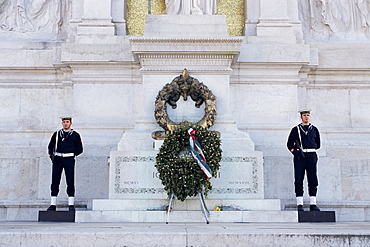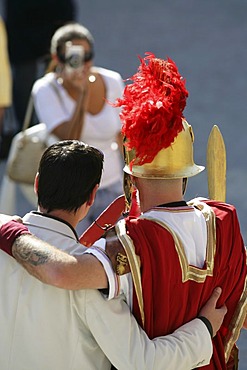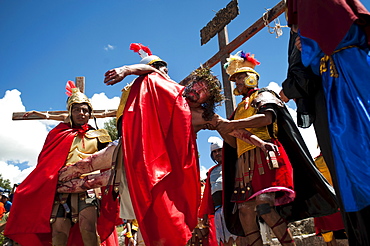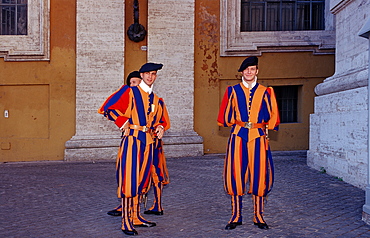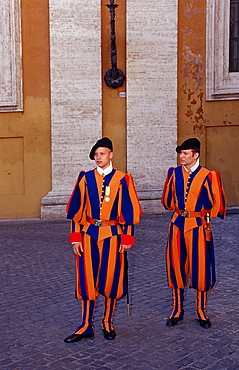Results
5 results found
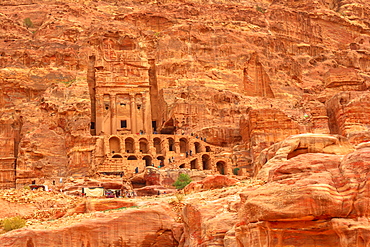
Roman soldier's tomb (Urn tomb) located in the side of the mountain known as al-Khubta, above Wadi Musa, Petra, UNESCO World Heritage Site, Jordan, Middle East
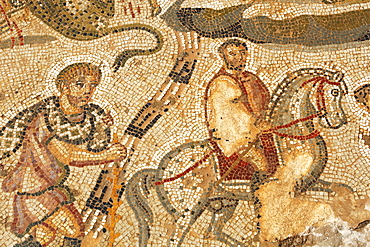
Part of the Amphitrite Roman mosaic, House of Amphitrite, Bulla Regia Archaeological Site, Tunisia, North Africa, Africa
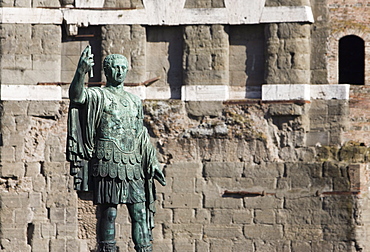
Statue of Roman soldier in front of Trajan's Forum, Via Dei Fori Imperiali, Rome, Lazio, Italy, Europe
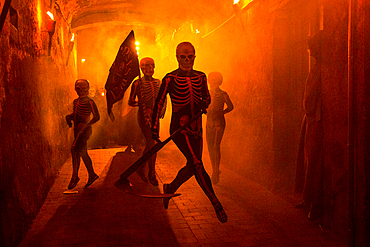
Verges, a small town in the Northeast of Catalonia (Spain), during Easter celebrates the Procession of Verges with skeletons dancing on the sound of a drum, Roman soldiers, known as the 'Manages', and a representation of the life and crucifixion of Jesus Christ. The Procession features the Dance of Death, a tradition from the Middle Age associated with epidemics and plagues and the only one remaining in Spain Ten skeletons dance to the beat of a drum to remember that no one is exempt of death. The backdrop of the medieval walls and towers of Verges is key to this macabre staging.
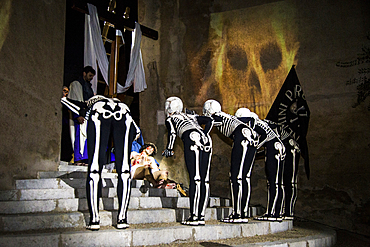
Verges, a small town in the Northeast of Catalonia (Spain), during Easter celebrates the Procession of Verges with skeletons dancing on the sound of a drum, Roman soldiers, known as the 'Manages', and a representation of the life and crucifixion of Jesus Christ. The Procession features the Dance of Death, a tradition from the Middle Age associated with epidemics and plagues and the only one remaining in Spain Ten skeletons dance to the beat of a drum to remember that no one is exempt of death. The backdrop of the medieval walls and towers of Verges is key to this macabre staging.
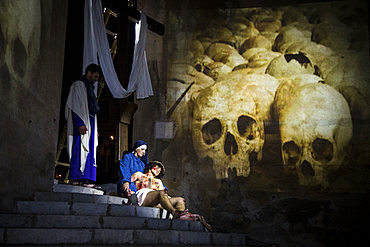
Verges, a small town in the Northeast of Catalonia (Spain), during Easter celebrates the Procession of Verges with skeletons dancing on the sound of a drum, Roman soldiers, known as the 'Manages', and a representation of the life and crucifixion of Jesus Christ. The Procession features the Dance of Death, a tradition from the Middle Age associated with epidemics and plagues and the only one remaining in Spain Ten skeletons dance to the beat of a drum to remember that no one is exempt of death. The backdrop of the medieval walls and towers of Verges is key to this macabre staging.
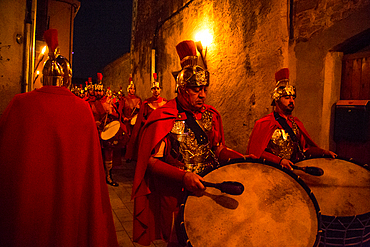
Verges, a small town in the Northeast of Catalonia (Spain), during Easter celebrates the Procession of Verges with skeletons dancing on the sound of a drum, Roman soldiers, known as the 'Manages', and a representation of the life and crucifixion of Jesus Christ. The Procession features the Dance of Death, a tradition from the Middle Age associated with epidemics and plagues and the only one remaining in Spain Ten skeletons dance to the beat of a drum to remember that no one is exempt of death. The backdrop of the medieval walls and towers of Verges is key to this macabre staging.
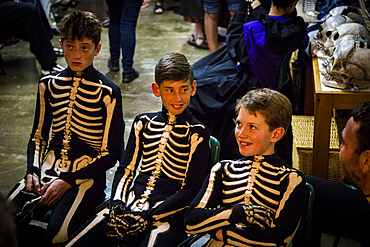
Verges, a small town in the Northeast of Catalonia (Spain), during Easter celebrates the Procession of Verges with skeletons dancing on the sound of a drum, Roman soldiers, known as the 'Manages', and a representation of the life and crucifixion of Jesus Christ. The Procession features the Dance of Death, a tradition from the Middle Age associated with epidemics and plagues and the only one remaining in Spain Ten skeletons dance to the beat of a drum to remember that no one is exempt of death. The backdrop of the medieval walls and towers of Verges is key to this macabre staging.
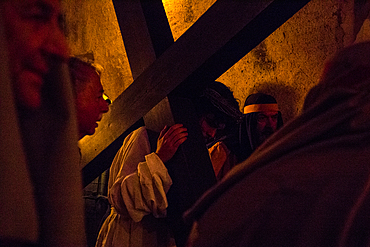
Verges, a small town in the Northeast of Catalonia (Spain), during Easter celebrates the Procession of Verges with skeletons dancing on the sound of a drum, Roman soldiers, known as the 'Manages', and a representation of the life and crucifixion of Jesus Christ. The Procession features the Dance of Death, a tradition from the Middle Age associated with epidemics and plagues and the only one remaining in Spain Ten skeletons dance to the beat of a drum to remember that no one is exempt of death. The backdrop of the medieval walls and towers of Verges is key to this macabre staging.
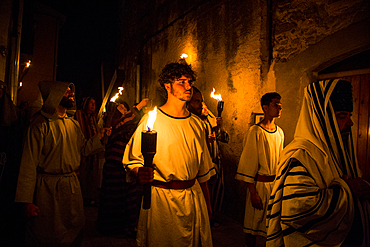
Verges, a small town in the Northeast of Catalonia (Spain), during Easter celebrates the Procession of Verges with skeletons dancing on the sound of a drum, Roman soldiers, known as the 'Manages', and a representation of the life and crucifixion of Jesus Christ. The Procession features the Dance of Death, a tradition from the Middle Age associated with epidemics and plagues and the only one remaining in Spain Ten skeletons dance to the beat of a drum to remember that no one is exempt of death. The backdrop of the medieval walls and towers of Verges is key to this macabre staging.
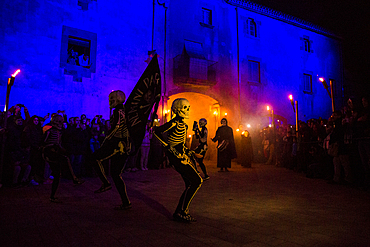
Verges, a small town in the Northeast of Catalonia (Spain), during Easter celebrates the Procession of Verges with skeletons dancing on the sound of a drum, Roman soldiers, known as the 'Manages', and a representation of the life and crucifixion of Jesus Christ. The Procession features the Dance of Death, a tradition from the Middle Age associated with epidemics and plagues and the only one remaining in Spain Ten skeletons dance to the beat of a drum to remember that no one is exempt of death. The backdrop of the medieval walls and towers of Verges is key to this macabre staging.
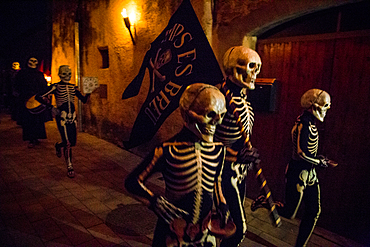
Verges, a small town in the Northeast of Catalonia (Spain), during Easter celebrates the Procession of Verges with skeletons dancing on the sound of a drum, Roman soldiers, known as the 'Manages', and a representation of the life and crucifixion of Jesus Christ. The Procession features the Dance of Death, a tradition from the Middle Age associated with epidemics and plagues and the only one remaining in Spain Ten skeletons dance to the beat of a drum to remember that no one is exempt of death. The backdrop of the medieval walls and towers of Verges is key to this macabre staging.
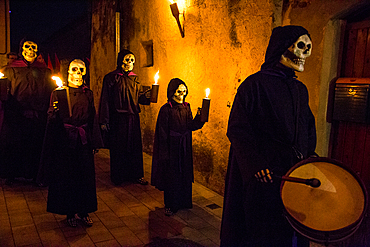
Verges, a small town in the Northeast of Catalonia (Spain), during Easter celebrates the Procession of Verges with skeletons dancing on the sound of a drum, Roman soldiers, known as the 'Manages', and a representation of the life and crucifixion of Jesus Christ. The Procession features the Dance of Death, a tradition from the Middle Age associated with epidemics and plagues and the only one remaining in Spain Ten skeletons dance to the beat of a drum to remember that no one is exempt of death. The backdrop of the medieval walls and towers of Verges is key to this macabre staging.
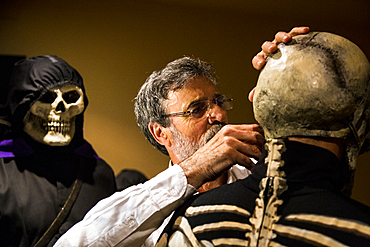
Verges, a small town in the Northeast of Catalonia (Spain), during Easter celebrates the Procession of Verges with skeletons dancing on the sound of a drum, Roman soldiers, known as the 'Manages', and a representation of the life and crucifixion of Jesus Christ. The Procession features the Dance of Death, a tradition from the Middle Age associated with epidemics and plagues and the only one remaining in Spain Ten skeletons dance to the beat of a drum to remember that no one is exempt of death. The backdrop of the medieval walls and towers of Verges is key to this macabre staging.

